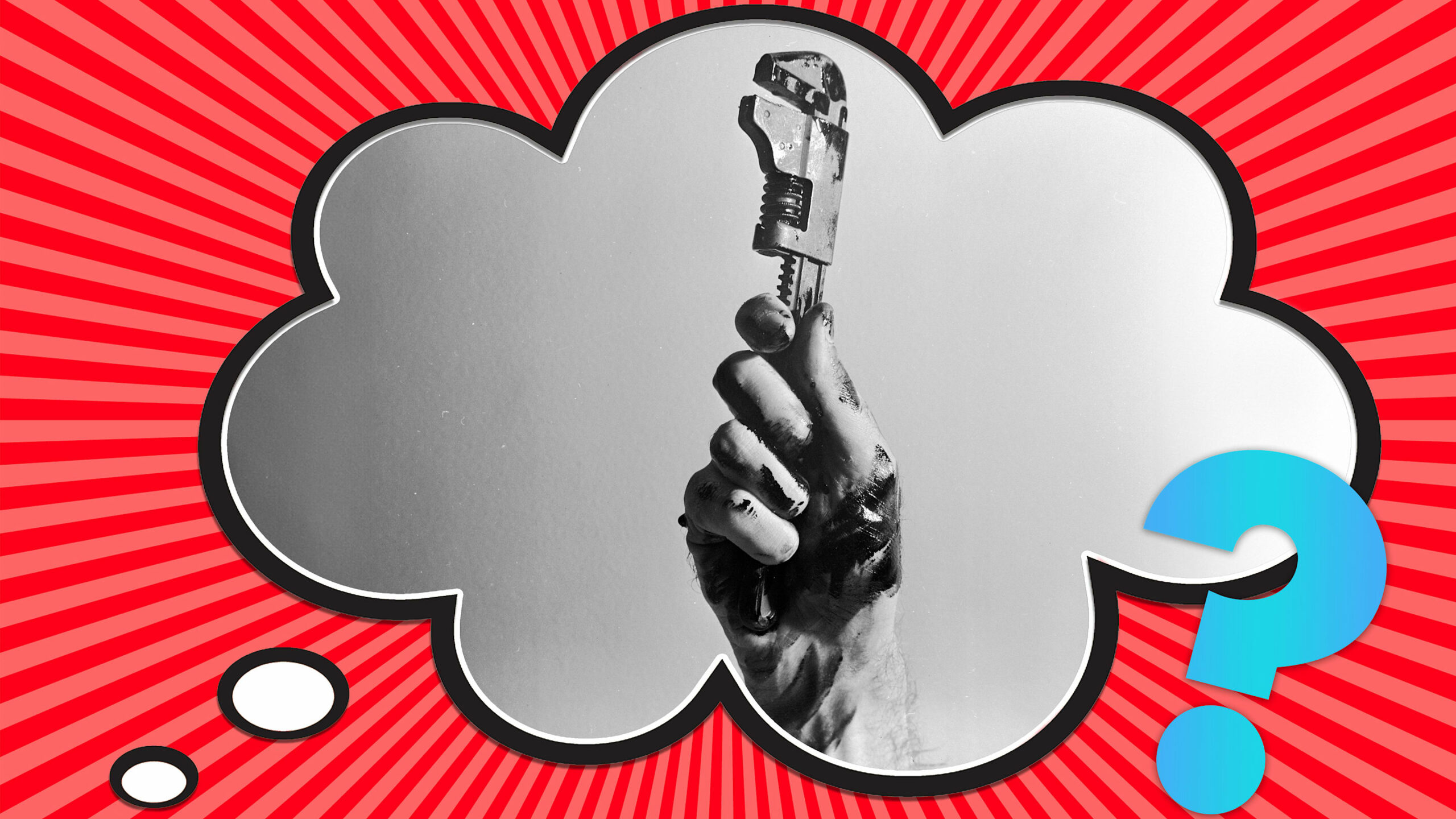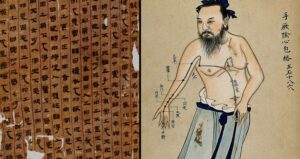“Unraveling the Curious Origins of the ‘Monkey Wrench’: A Tool with a Tale That Will Surprise You!”
Ever picked up a heavy monkey wrench and wondered why on earth we’re dubbing a plumbing tool with the name of a primate? It’s a sort of irony that this tough-as-nails tool could, hypothetically, moonlight as a prop in a detective story! As much as it’s known for loosening stubborn bolts and fittings, its origin story is perplexingly tangled. Some might think it’s just a fun name, but there’s more to the tale—think inventors, a hint of folklore, and a sprinkle of urban myth. Strap in as we unwrap the origins of the monkey wrench and find out why this seemingly simple tool has such a curious moniker. LEARN MORE.
Plumbers and car mechanics alike are familiar with the monkey wrench, a heavy-duty tool with perpendicular jaws that can loosen or secure even the most stubborn of fittings. Monkey wrenches are so substantial they could probably double as a murder weapon, though we’re not recommending it.
But what does a plumber’s wrench have to do with primates? How did the monkey wrench get its name?
The Origin of the Monkey Wrench
Monkey wrench can actually refer to more than one kind of wrench. Historically, such a wrench would have smooth jaws that run perpendicular to the handle and adjusted vertically; a pipe wrench is similar but with serrated jaws; a crescent wrench has jaws running parallel (or almost parallel) to the handle and a moveable jaw that is adjustable horizontally. Sometimes, people refer to a crescent or pipe wrench as a monkey wrench, though that’s not really correct. Generally, if you’ve got a wrench with vertical, smooth. adjustable jaws running sideways to the handle (like the one seen at the top of the article), it’s a monkey wrench.

Almost as confusing as the monkey wrench label is arriving on who deserves credit for inventing it. As is the case with many tools, there were several people who came up with the basic concept for an adjustable wrench. But the name that comes up with the monkey wrench most often is Charles Moncky, a mechanic from Baltimore, who designed a wrench circa 1858. The story is agreeably pat: Moncky introduced a wrench that soon took on an approximation of his last name.
Another version of the story has a man inventing the wrench while working at the toolmaking plant Bemis & Call in Springfield, Massachusetts, in 1854. The story was related in the town’s Morning Union newspaper in 1932: “In their employ was a typical, ingenious Yankee named Monck who conceived the idea of building a movable jaw into the wrench … about the shop it was known as Monck’s wrench and soon, with a Darwinian twist, it became known as the monkey wrench.”
But is either tale true? Some historians don’t think so. For one thing, Charles Moncky is just one of several similarly-named individuals who have been cited as the inventor over the years. A Charles Moncke of London was one; Americans Monk, Monky, Moncay, Munkey, and other simian names have also sprung up, all seemingly in a bid to attach meaning to the slang term.
There’s also a chronological aberration to contend with. Some cite earlier mentions of a monkey wrench in England that pre-date Moncky’s alleged invention. The Oxford English Dictionary dates the term to a tool catalog circa 1807, and a resident of England appeared in a police blotter in 1826 for “stealing a monkey wrench.”
The most compelling evidence may be in Appleton’s Dictionary of Machines, Mechanics, Engine-Work and Engineering, a tool tome published in 1852 that credits a “screw wrench” to “S. Merrick” of Springfield, Massachusetts, in 1835. Coincidentally or not, Springfield is the very same town where “Monck” was said to have devised his wrench and around the same time. The screw wrench was said to be similar to the monkey wrench, though again the name itself goes back decades further.
It’’s possible these two stories are related, and connecting them may bring one closer to the truth. According to author Vince Staten, who wrote the 1996 tool history Did Monkeys Invent the Monkey Wrench?, yet another version of the origin story has a Springfield machinist named Solymon Merrick trying to perfect the tool with the help of one of his linemen at the factory—a man nicknamed “monkey” for reasons not quite clear. Because the plant was making other types of wrenches, workers took to calling it “monkey’s wrench.”

Another intriguing explanation exists. When the monkey wrench first emerged, it was in contrast to another tool called a “key wrench”; some took to calling it a “non-key wrench,” which was soon misread or misunderstood as monkey wrench.
So what can we make of this often-conflicting history? We know that Solymon Merrick developed a wrench, possibly in conjunction with a worker with a name or nickname that sounded like “monkey,” in the mid-1800s. The term monkey wrench, however, was already in use in England at that time. Merrick may have thought he had a novel idea, but it may have been more a case of parallel thinking.
The Urban Myth Surrounding the Monkey Wrench
In 2015, early 20th century boxer Jack Johnson (1878–1946) began being credited on social media as having invented the monkey wrench, which was allegedly given the moniker as a racial slur “to tarnish this great accomplishment,” according to the meme.
The story isn’t true, though it conflates elements of the truth. Johnson, a Black heavyweight champion, experienced considerable racial enmity during his reign. When he fought and beat white boxer James Jefferies in 1910, riots broke out around the country. He later left the United States to avoid a prison term stemming from an alleged violation of the Mann Act, which prohibited transporting women across state lines for sexual activity. Johnson was traveling with his future wife, Lucille, at the time. That Lucille was white likely incited law enforcement into railroading Johnson.
The other kernel of truth is that Johnson did, indeed, co-invent a pipe wrench, one he developed in tandem with other prisoners while incarcerated at Leavenworth Prison upon returning to the States. The wrench was an improvement on then-current designs that not only had a better grip but could be disassembled more easily than other wrenches. The application for the patent was approved in 1922. The men reportedly refused $20,000 to buy the patent and instead started their own tooling company, J.A.J. Wrench Corporation.
But the term monkey wrench was not weaponized against Johnson. As we’ve seen, it had been in use long before Johnson had even been born.
Throwing a Monkey Wrench Into the Works
It’s hard to discuss monkey wrenches without touching on the famous idiom involving the tool: throwing a monkey wrench into the works. It’s often said to indicate someone is committing an act that threatens to upend or disturb a plan or event that was otherwise agreeable.
The OED dates this version of the phrase to 1907. There’s also throwing a spanner into the works; spanner is another name for a wrench that’s typically used in the UK.

According to idiom researcher Gary Martin, throwing a monkey wrench (or spanner) into the works likely refers to the calamitous effects of throwing a wrench into a piston or gear in an industrial setting. The tool would sabotage any activity, grinding it to a halt. Martin believes the spanner version of the phrase may date as far back as 1828 in New Zealand.
Monkeys seem to crop up in industrial or labor settings with regularity in our lexicon. Grease monkey, a term for someone who works on cars and is often covered in grease, first popped up in print in 1928. As for why primates seem to be associated so often with labor and tools, who knows? Some monkeys have been observed to use stone tools, sometimes to access food. But none has crafted anything resembling a wrench. At least, not yet.
Get Answers to More Big Questions:
manual














